Audia Flight FL Three S
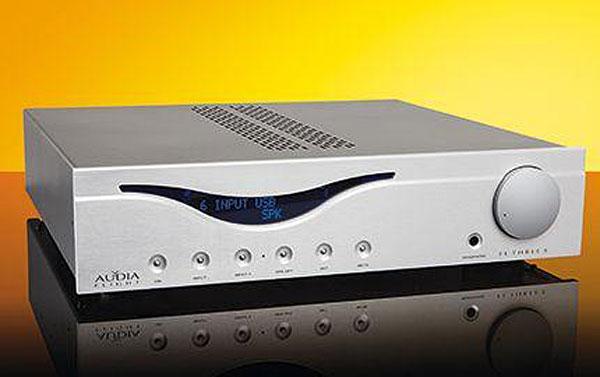
 Started in 1996 by electronics engineers Massimiliano Marzi and Andrea Nardini, Audia Flight’s philosophy is to use solid state in an interesting way, and the company’s first product – the 100 power amplifier – sported current feedback design, something that’s shared by its distant descendent the FL Three S. Being Italian, style is also a big thing – what would you expect from the land of La Bella Figura?
Started in 1996 by electronics engineers Massimiliano Marzi and Andrea Nardini, Audia Flight’s philosophy is to use solid state in an interesting way, and the company’s first product – the 100 power amplifier – sported current feedback design, something that’s shared by its distant descendent the FL Three S. Being Italian, style is also a big thing – what would you expect from the land of La Bella Figura?
All the company’s products look interesting – a long way from the generic blandness of many modern boxes. This is despite the fact that it’s Audia Flight’s entry-level integrated; those with deeper pockets might like to peruse the mid-range Classic series, or the Strumento high-end offerings.
Being a modern machine, this integrated amplifier has pretty much everything except the proverbial kitchen sink. That means four unbalanced analogue inputs, one balanced analogue in, one monitor in and one analogue in that can be assigned to bypass the preamp section; effectively making it a power amp. There there’s an optional MC/MM board, which replaces the first analogue in for £330, while the sixth input becomes a 24-bit/192kHz DAC when equipped with the optional £360 USB DAC board. In terms of outputs, there are unbalanced preamp and record outs, plus a headphone socket alongside the loudspeaker connections. In short, it’s hard to think of anything that the FL Three S is missing – aside perhaps from DSD via USB, which is still a marginal pursuit.
This is a standard full-width design with the usual 10mm-thick aluminium fascia and pressed steel casework, but the fascia’s feel is quirky and invested with character and charm. The largest section of the curved recess has a crisp bright blue dot-matrix OLED display. To the right is a subtly protruding volume knob with a nice slick action. There’s a row of crisp-feeling metal push buttons to its left, beneath the display area, giving easy source selection, speaker switching, muting and on/standby functions. The remote is a lovely aluminium affair with nicely acting buttons. A headphone socket completes the front panel’s package. The FL Three S is another case of a product feeling more than the sum of its parts, thanks to careful attention to aesthetic and ergonomic detail – plus a little bit of Italian design flair.
Inside, it’s more of the same. Eight power rails run off the large main 576VA toroidal transformer, feeding all amplifier stages, with 13,200µF capacitance available. Four high-current power supplies (72,000µF) are then dedicated solely to the twin power output driver stages, says Audia Flight. There’s a smaller toroidal transformer for the logic states of the amplifier, and sealed, gold terminated relays are fitted. The company’s own current feedback circuitry is used in the power amp section, while the preamp section sports a good-quality ALPS Blue potentiometer, and a separate discrete headphone section. The output stage uses high-quality MJL1302A and MJL3281A bipolar silicon power transistors running in Class A mode up to 0.5W RMS, after which it switches into Class AB. This explains why the amplifier runs so warm at even quite low volumes. Audia Flight claims a power output of 100W RMS per channel into 8ohm, and 160W into half that.
Sound quality
There’s something very satisfying about the sound of the FL Three S. It’s big and it’s chunky, it has a rich and warm tone, but with plenty of detail and a sense of rhythmic imperturbability. Music seems to flow out of this integrated amplifier in a relaxed but undeniably enjoyable way, and it doesn’t matter what type of programme material you choose, things are never less than satisfying.
I like the fact that this isn’t an in-your-face sounding design, trying at every given moment to show you just how feisty and relentless it is – this big Italian box takes a step back and deals with the music in a more louche way. Paul McCartney’s Girlfriend is an interesting case in point – it’s a super smooth seventies song that can sound rather flat on the wrong system, but this amplifier gets right to its heart. Yes, the sound is tonally warm but still the amp ekes out the essential emotion from the song. The clever thing is that it never seems to show that it’s trying; everything is handled in a gentle yet assured, laid back yet resolute way. This amplifier has a certain charm of its very own, that makes things engaging yet exceedingly pleasant to listen to – you might almost say it has a rather aristocratic nature.
All well and good, but when you crank up the pace, and move to a slightly more forward rock standard like Steve Hackett’s Narnia, the sound doesn’t change as dramatically as you might have expected. This is a great slice of uptempo prog rock from the man that many think was the best musician in Genesis, and there’s some lovely Stratocaster picking going on throughout the song. The Audia captures this adeptly, but it seems just a little too soft and sweet for its own good. Pete Hicks’ vocals also come over as a little more syrupy than they should be. That’s not to say it doesn’t make a nice noise; it does. The whole song sounds like it’s been blown up to approaching twice its original size; there’s a wonderfully expansive soundstage and the bass provides a big, fat foundation to this stomping rock song. The overall effect is great, but not strictly accurate – there’s a touch too much colouration, especially across the upper bass but it does extend all the way to the treble. This gives the amp an almost ‘valve-like’ quality that some will love, while others will feel that it’s a little too calorific for their taste.
Feed the FL Three S with some jazz and it’s back in its element. Donald Byrd’s Street Lady is a great post-bop Blue Note recording that almost borders on funk, and it’s a lovely analogue recording. The Audia Flight takes to it like a duck to water; it’s as if it was designed to play this sort of music, making it sound beautiful to the ear. The shuffling rhythms have a lovely lilting quality to them, and I am impressed by the tonal purity of the brass instruments. Better still, this amplifier is sufficiently detailed for you to hear all the different strands in the mix play individually, rather than just producing a morass of sound. This is a trick that normally only good pre/power amplifier combos pull off, but this integrated does it without so much as raising an eyebrow. It’s all in a day’s work for this very impressive product, as you never get the sense that it’s trying too hard. The song is rendered in a wonderfully enjoyable way – big soundstage, decent depth perspective, strong detail retrieval and fine dynamics, allied to convincing rhythms.
It’s only with classical or techno that the charismatic Audia Flight’s pleasing character ever gets found out. It’s simply not clean enough to really zoom right in on a high-class recording and play it back in its unalloyed glory. The FL Three S just can’t seem to resist adding some of its own – admittedly very endearing – character to the proceedings. Kraftwerk’s The Robots sounds just a little too bogged down in the bass; the amp has prodigious bass, which is great, but with large full-range loudspeakers it can sound just a little too bulbous. It’s not quite as lithe as some similarly priced amplifiers, lacking grip. You hear this on great classical recordings too; the Berlin Philharmonic conducted by Karajan doing Beethoven’s Fifth Symphony is a lovely thing to hear, but there’s still a little plumpness in the bass that shouldn’t really be there. That said, you can’t criticise the amp for the cathedral-like recorded acoustic it conjures up or the pleasing rhythmic lilt of the music.
Conclusion
Even if it’s not the most neutral or revealing of things, Audia Flight’s FL Three S has real charm to its nature, and it makes music a pleasure to listen to. Factor in the pleasing packaging and reasonably priced optional upgrades, and it’s hard not to like. It’s well worth an audition if you’re in the market for an audiophile integrated amplifier at a great price. DP
DETAILS
Product: Audia Flight FL Three S
Price: £2,495
Origin: Italy
Type: Integrated amplifier
Weight: 16.5kg
Dimensions: (WxHxD) 450 x 110 x 430mm
FEATURES
● Quoted power output: 2x 100W RMS (8ohm)
● Class A up to 0.5W; then Class AB
● ALPS Blue volume potentiometer
● Optional MM/MC phono and USB DAC boards
Distributor: Elite Audio
Telephone: 01334 570666
Website: audia.it
Read the full review in July issue 438
 |
Inside this month's issue: Arcam Radia A25 integrated amp, iFi Audio iDSD Diablo 2 DAC/headphone amp, Eversolo DMP-A8 streamer/DAC/preamp, Line Magnetic LM-845IA valve amp, Record Store Day Spring Drop, standmount loudspeaker Group Test and much, much more
|

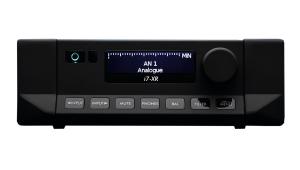
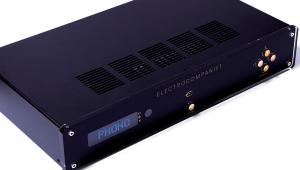

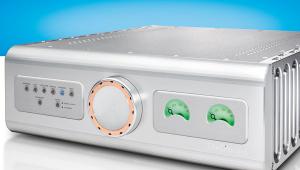
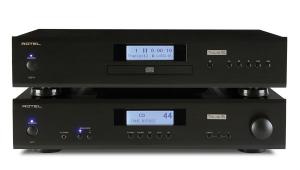
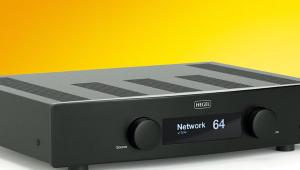
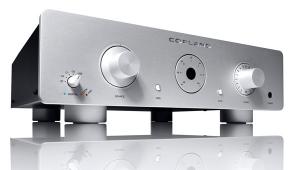




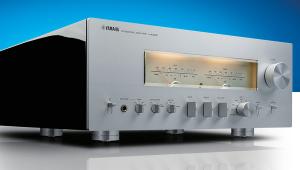
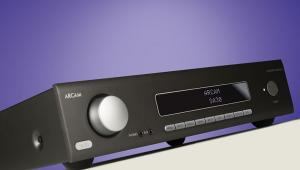

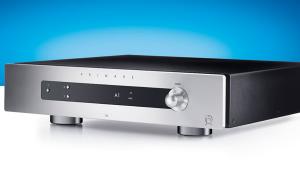
































.jpg)



